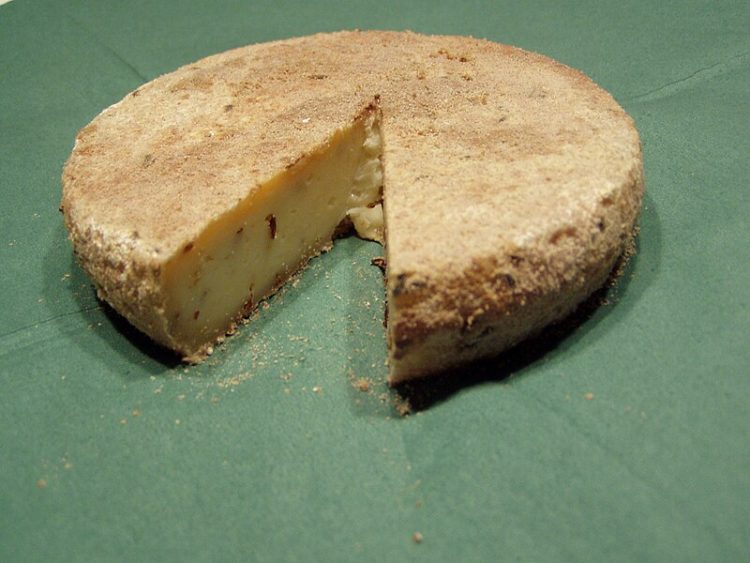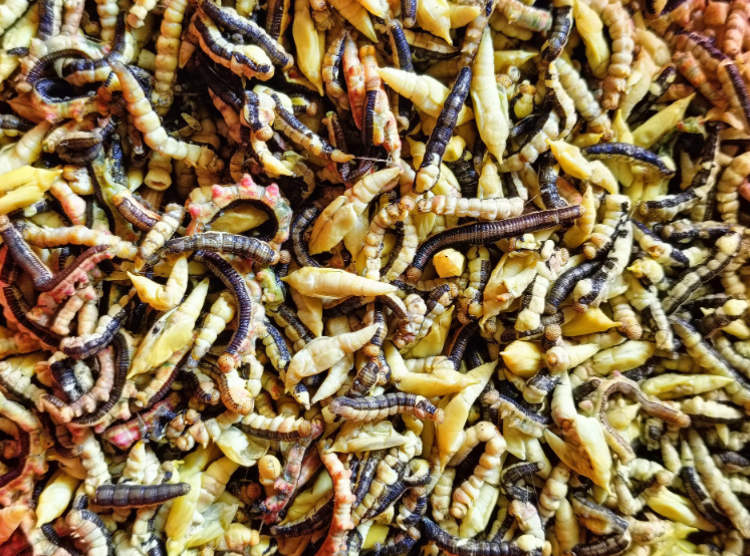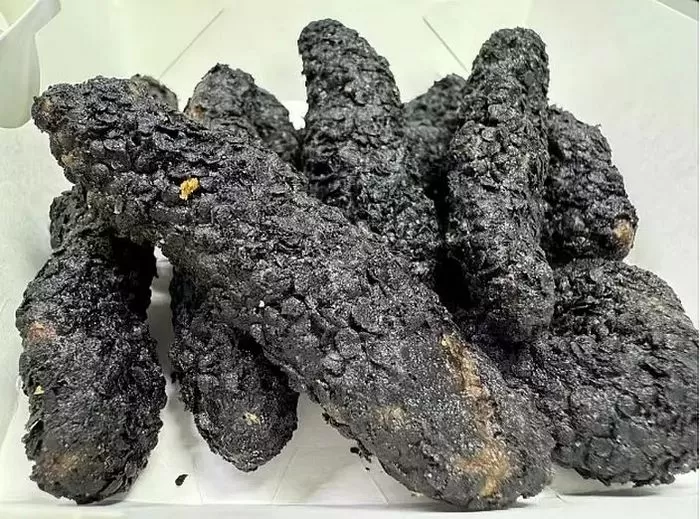Milbenkäse is a unique type of goat cheese ripened in wooden boxes infested with millions of tiny cheese mites and consumed with the tiny critters for added taste.
The history of Milbenkäse can be traced back to the Middle Ages when it was produced in Saxony-Anhalt and Thuringia regions of Germany, but the cheese-making tradition faded with time, and in 1970 the recipe for Milbenkäse was nearly lost forever. An elderly woman in the village of Würchwitz remained the only person in the world who knew how to make this special cheese, and she passed on her knowledge to local science teacher Helmut Pöschel. He in turn partnered with Christian Schmelzer and together they managed to revitalize the production of the so-called “spider cheese”. Today, Würchwitz is the only place in the world where Milbenkäse is still produced.
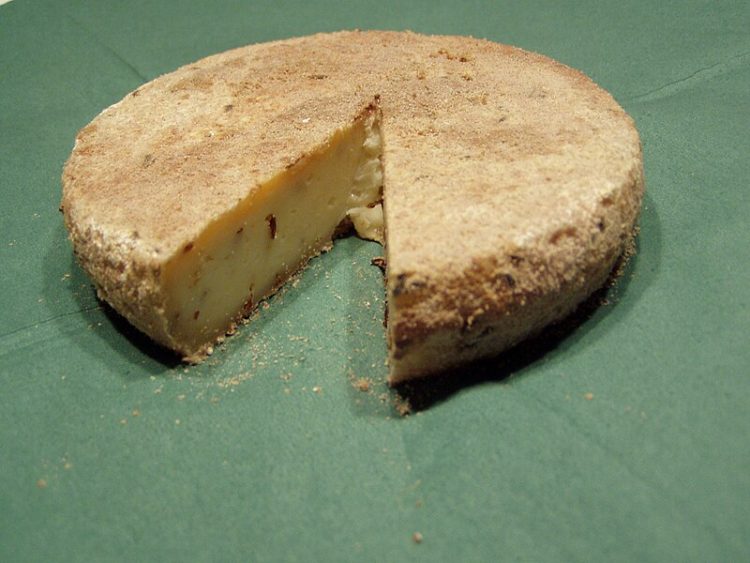
Photo: Dundak/Wikimedia Commons
To make this special cheese, cheesemakers begin by seasoning small balls of quark with salt caraway, and elderflower. They then place them in large wooden boxes and cover them up in a thick layer of live mites, millions of them, and lt them cure the cheese for three months to a year. An enzyme in the digestive juices excreted by the mites causes the cheese to ripen, giving it a strong, unpleasant ammonia smell, but also a nutty flavor with a zesty aftertaste. Interestingly, the mite-infested cheese rind is also consumed with the cheese.
The Tyrophagus casei mites that work their magic on Milbenkäse are regularly fed rye flour throughout the ripening process, because they would otherwise consume the whole piece of cheese, instead of nibbling at the rind and curing it. After about a month the rind starts to turn yellow, after three months, it becomes brown, but some producers cure it for a week, at which point the rind is black.
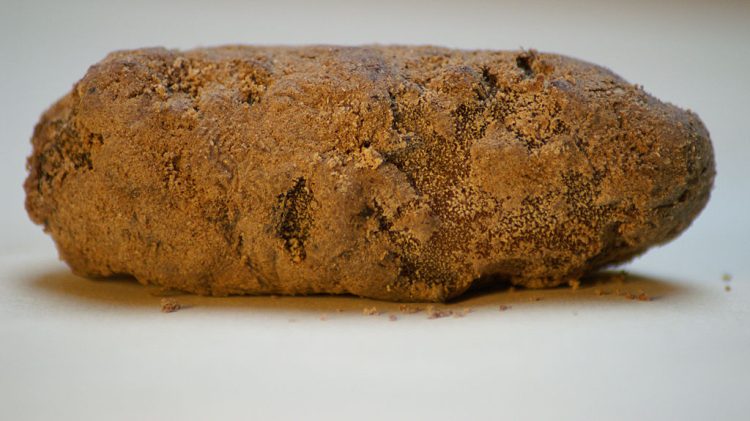
Photo: Dundak/Wikimedia Commons
Milbenkäse or spider cheese is said to be very beneficial for digestion, and some say that exposure to cheese mites can alleviate the allergic reactions triggered by dust mites. However, according to some sources, prolonged exposure to large quantities of cheese mites can actually cause a mild allergic reaction. Plus, a lot of people just aren’t comfortable eating a piece of cheese infested with tiny live arachnids.
The intentional use of mites in the production of Milbenkäse has sparked controversy in Germany, as it puts the cheese in a sort of grey area. According to EU law, the sale of foods containing living animals is permitted if they are “prepared for placing on the market for human consumption”. However, cheese mites or their digestive juices are not explicitly permitted as cheese ingredients. Therefore, Milbenkäse can only be produced under a permit by the local food safety office.

